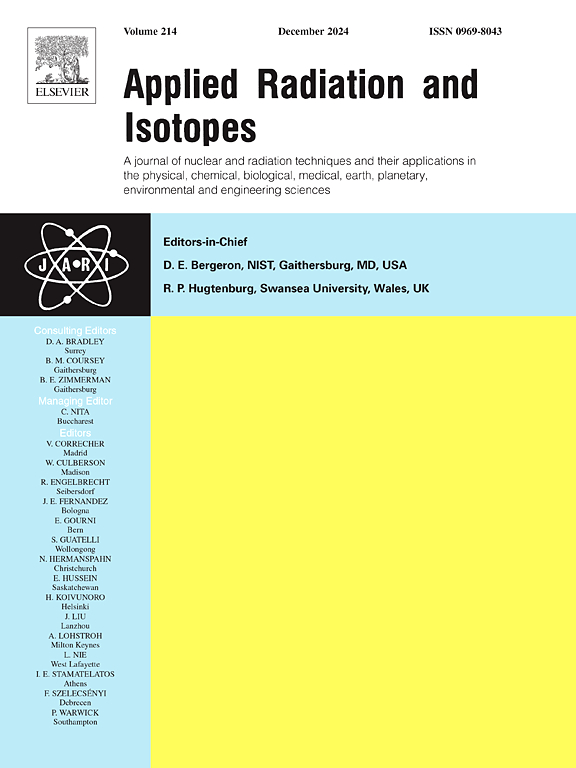Design and manufacturing of a dynamically deformable liver phantom for radiotherapy
IF 1.6
3区 工程技术
Q3 CHEMISTRY, INORGANIC & NUCLEAR
引用次数: 0
Abstract
Phantoms representing anatomical deformations are necessary to investigate and improve dynamic treatments. In this study, we aimed to produce a deformable liver phantom by simulating respiratory motion.
The dynamically DEformable Liver Phantom (DELP) is designed to create a human-specific respiratory model and to produce synchronised, repeatable motion with this model. For the deformation effect of this movement, an artificial liver was created using silicone material and mold. A stepper motor was used to compress the liver in the inferior direction according to an adjustable respiratory motion. Reference markers (fiducial) placed on the DELP helped to verify the movement and calculate the deformation. In dynamic deformation tests, the greatest amount of deformation was found in the edge region of the silicone liver. The average deformation was 3.45 ± 0.93 mm when 5 mm amplitude movement was applied and 5.98 ± 0.01 mm when 10 mm amplitude movement was applied.
DELP is a deformable liver phantom with motion reproducibility. Its performance in radiotherapy application was evaluated using dosimetric equipment.
设计和制造用于放射治疗的动态可变形肝脏模型。
要研究和改进动态治疗,就必须有代表解剖变形的模型。在这项研究中,我们旨在通过模拟呼吸运动来制作可变形肝脏模型。动态可变形肝脏模型(DELP)旨在创建一个特定于人体的呼吸模型,并与该模型产生同步、可重复的运动。为了产生这种运动的变形效果,使用硅胶材料和模具制作了一个人工肝脏。根据可调节的呼吸运动,使用步进电机在下方向压缩肝脏。放置在 DELP 上的参考标记(靶标)有助于验证运动和计算变形。在动态变形测试中,硅肝边缘区域的变形量最大。当施加 5 毫米幅度的运动时,平均变形量为 3.45 ± 0.93 毫米;当施加 10 毫米幅度的运动时,平均变形量为 5.98 ± 0.01 毫米。DELP 是一种具有运动再现性的可变形肝脏模型。使用剂量测定设备对其在放射治疗应用中的性能进行了评估。
本文章由计算机程序翻译,如有差异,请以英文原文为准。
求助全文
约1分钟内获得全文
求助全文
来源期刊

Applied Radiation and Isotopes
工程技术-核科学技术
CiteScore
3.00
自引率
12.50%
发文量
406
审稿时长
13.5 months
期刊介绍:
Applied Radiation and Isotopes provides a high quality medium for the publication of substantial, original and scientific and technological papers on the development and peaceful application of nuclear, radiation and radionuclide techniques in chemistry, physics, biochemistry, biology, medicine, security, engineering and in the earth, planetary and environmental sciences, all including dosimetry. Nuclear techniques are defined in the broadest sense and both experimental and theoretical papers are welcome. They include the development and use of α- and β-particles, X-rays and γ-rays, neutrons and other nuclear particles and radiations from all sources, including radionuclides, synchrotron sources, cyclotrons and reactors and from the natural environment.
The journal aims to publish papers with significance to an international audience, containing substantial novelty and scientific impact. The Editors reserve the rights to reject, with or without external review, papers that do not meet these criteria.
Papers dealing with radiation processing, i.e., where radiation is used to bring about a biological, chemical or physical change in a material, should be directed to our sister journal Radiation Physics and Chemistry.
 求助内容:
求助内容: 应助结果提醒方式:
应助结果提醒方式:


